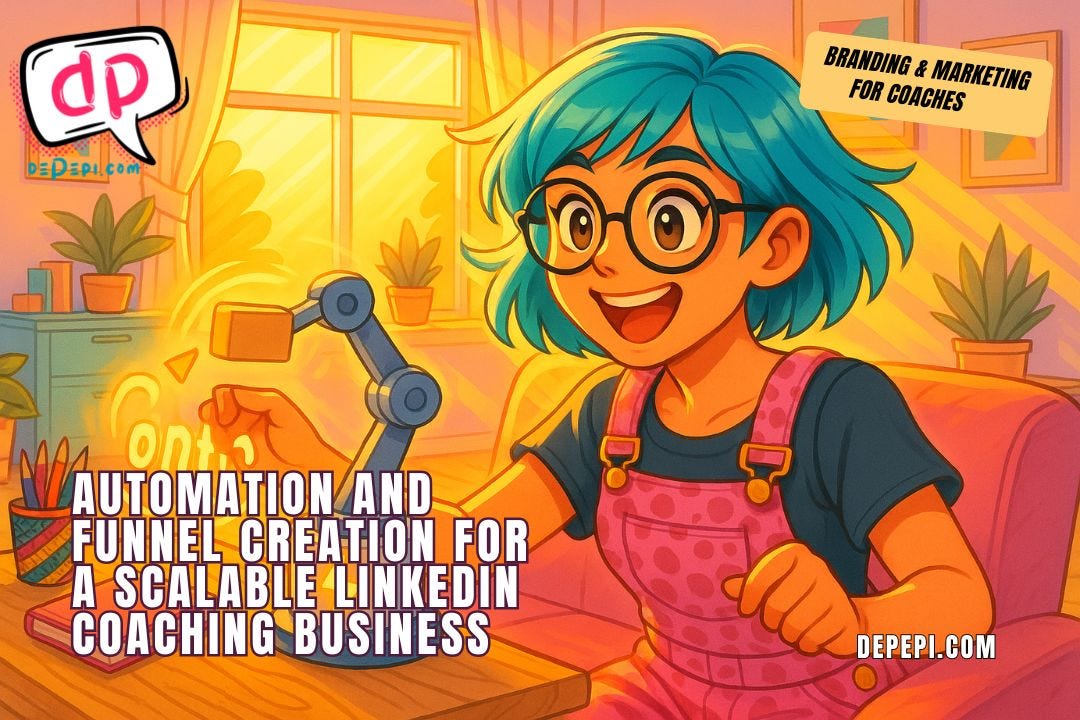Automation and Funnel Creation for a Scalable LinkedIn Coaching Business
Why do you need to think about this?
LinkedIn has become the primary marketplace for coaches who want to attract serious clients without endlessly chasing leads. But if you’ve ever tried growing your coaching business there, you’ve likely hit the same wall as everyone else:
Endless posting with little traction.
Manual follow-ups that take hours.
Connections that don’t convert into clients.
At some point, your calendar (and energy) becomes the bottleneck.
That’s why automation and funnel creation are no longer “nice-to-haves” for coaches. Both are the difference between a coaching business that hustles to survive and one that scales sustainably.
Why Funnels Matter
Funnels might seem tricky for coaches. They sound corporate, salesy, or overly complex. But a funnel is nothing more than a guided journey from stranger → connection → client.
Think of it this way:
On LinkedIn, visibility (posting and networking) sparks awareness.
A funnel takes that awareness and nurtures it into trust.
Automation keeps the whole system moving without burning you out.
Without funnels, you’re constantly starting conversations from scratch. With them, you’re guiding potential clients through a structured path that highlights your value, answers objections, and makes saying “yes” feel natural.
The Role of Automation (and the Fear Behind It)
Some coaches avoid automation because they believe it kills intimacy. It doesn’t if done right.
Bad automation does feel spammy. The endless cold DMs with “Hey {FirstName}, I help coaches 10x their income—want to chat?” have poisoned the well.
But automation doesn’t have to mean robotic. Done well, it’s like having an assistant who:
Sends a warm welcome when someone joins your email list.
Shares your best content in a sequence that feels curated.
Nudges a lead at the right time with a personal invitation to book a call.
The key is personalized automation. You keep the human tone and voice, but you stop relying on memory, sticky notes, or hours of manual work to follow up.
Automation should never replace human connection. It should enable it by clearing the admin clutter so you can focus on coaching conversations that matter.
This is why you need to take your sweet time to think carefully about every stage of the funnel.
How LinkedIn Traffic Fits Into Your Funnel
LinkedIn is the top of the funnel. This is where you capture attention. But attention is fleeting if you don’t direct it somewhere. That’s why your funnel must give LinkedIn traffic a destination.
Here’s the simple flow:
LinkedIn visibility → posts, comments, profile optimization.
Lead magnet → something irresistible that solves a small but real problem.
Automation sequence → nurturing emails or content drip that builds trust.
Call to action → booking a discovery call, applying for a program, or joining a workshop.
Let’s break this down.
Optimize Your Profile as the First Funnel Stage
Your LinkedIn profile is not a résumé.
(Read that again!)
It’s your first landing page.
Think of it as the top of your funnel.
Headline: should tell visitors exactly who you help and what outcome you deliver.
About section: structured as Hook → Story → Solution → Next Step.
Featured section: link directly to your lead magnet.
Experience section: show transformation, not titles.
Every part of your profile should funnel visitors toward one thing: joining your ecosystem.


